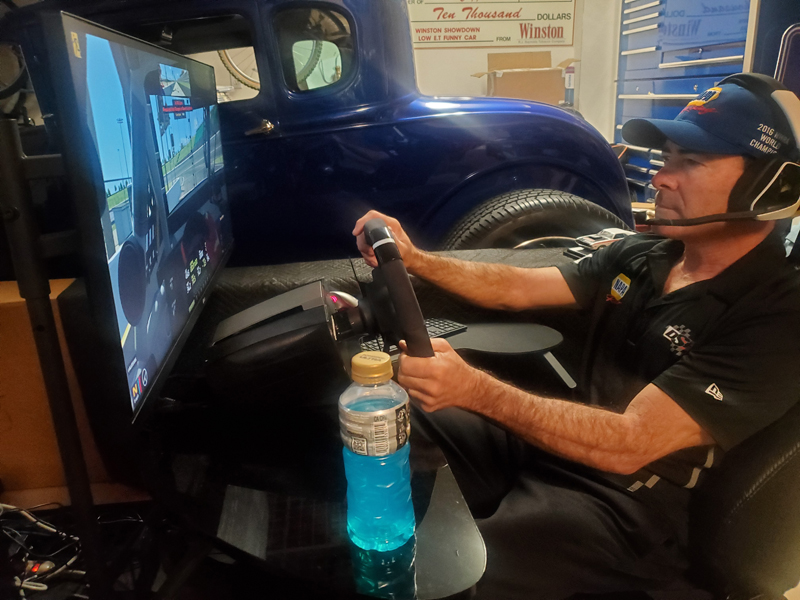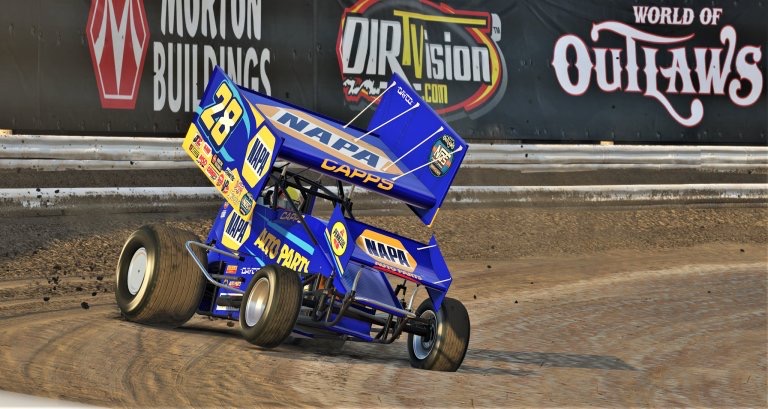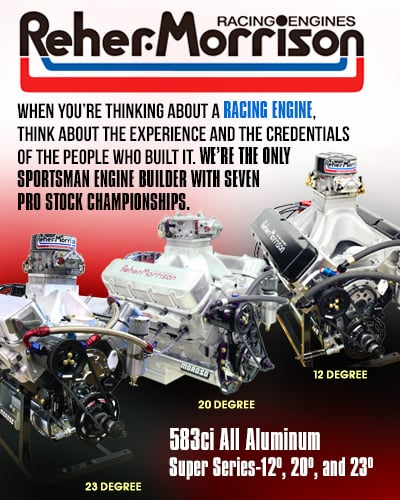NHRA NITRO RACERS SLIP INTO THE WORLD OF VIRTUAL REALITY
 Marvin Gaye and Tammi Terrell had it right 46 years ago when they sang, “Ain’t nothing like the real thing.”
Marvin Gaye and Tammi Terrell had it right 46 years ago when they sang, “Ain’t nothing like the real thing.”
But when the real thing isn’t an option, for racing, at least, it becomes a case of “anything is better than nothing.”
That’s been the situation for racers around the country since the onset of the coronavirus pandemic in America. NASCAR, IndyCar, NHRA have been idle for more than a month, and some series may not resume for another month still, if not longer. Racing on local and regional levels has been put on hold, too, though two dirt tracks in South Dakota plan to reopen this weekend with restrictions on the number of fans allowed to view the action.
In the meantime, virtual racing has exploded to the point that there have been nationally televised broadcasts on Fox and Fox Sports 1. Dirtvision.com has produced multiple shows on its platform for the World of Outlaws sprint car and late model ranks.
A couple of high-profile Funny Car racers with actual dirt-track experience have been a part of numerous circle-track events of late. NAPA-sponsored Ron Capps has joined Snap-On team owner/driver Cruz Pedregon on multiple occasions. Others of their drag racing peers — most notably Kalitta Motorsports teammates Shawn Langdon, Doug Kalitta and J.R. Todd — have gotten the bug, too, and are quickly adapting as e-racers.
Capps and Pedregon have extensive real-world experience turning left on dirt. That’s helped them be competitive against other pro drivers that grew up with virtual action.
“Very, very realistic,” is how Capps described racing against virtual competitors as well as the feel he gets behind the wheel. “I just got a note to start practicing in a UMP Modified because there might be a big race coming up on iRacing. I had forgotten how hard they are to drive.”
“I love dirt-track racing. That’s my second love behind drag racing,” said Pedregon, who won a dirt late model race at Kamp Motor Speedway in Boswell, Ind., in 2009. “To do it the way I want to do it, I want to be competitive, so I’ve got to put the time in and practice.”
The computer games have leveled the playing field among racers in numerous ways. Timmy Hill, a driver from Port Tobacco, Md., who competes in the premier NASCAR Sprint Cup Series with an underfunded team, hasn’t had a top-10 finish in that division — but he won a computer race against his peers several weeks ago at Texas Motor Speedway.
And e-racing has proved to have real-world pros and cons.
Indiana’s Logan Seavey, a Midget racer, has performed so well in dirtvision.com's races, including a win, that he’s going to get a chance to drive the Rocket Chassis late model “house car” at some point.

“We’ve told Seavey we’re probably going to let him come out and try one of (Brandon) Sheppard’s cars at one of our next testing sessions, just to let him get the feel of a real late model,” said Rocket co-founder and co-owner Mark Richards in a recent interview. The driver of the Rocket house car has won the World of Outlaws Late Model championship six times since 2009, including two of the last three with Sheppard.
On the down side, virtual racing has cost Cup driver Kyle Larson his job following his use of a racial epithet during a race in what he thought was a private conversation. Another Cup driver, Bubba Wallace, lost sponsor Blue Emu after “rage-quitting” an e-race following an early crash at Bristol.
Capps and Pedregon haven’t made those types of headlines, good or bad, to date. They are, though, working diligently to improve their on-track performance on gaming stations that are set up in their homes. Virtual racing even comes with race-day butterflies, both confessed.
“Not so much the heat races, but definitely for the feature,” Pedregon said. “It’s just like the real deal. It would be different if they were going to cherry-pick the guys, like just guys that aren’t as tech-savvy. But they put us in there with the wolves.
“The younger guys are very tech-savvy and video-savvy, and they’re just flat-out fast on these things,” he added. “Then there are guys that are mid-pack that’re good, real drivers but not so much in the video game scenario. Then you’ve got guys like me, I’m running with (Scott) Bloomquist back there, and he’s the John Force of late models and I’m mixing up with it with him in about 19th position. But I’m taking this seriously. I want to get a top 10.”
Capps’ rig is set up in his garage, and while he’s holed up in there racing, his family watches the action live from a different room in the house.
“You have no idea” how intense the jitters can get, Capps said. “The Fox Sports show is fun. … As soon as my race is over, I went in there where my family was and they were laughing at me because I was shaking.
“I was top 10 after starting 20th, and my throttle leg was shaking on the last lap because I wanted to get through that lap and finish the race. The coolest thing was hearing Christopher Bell and how he was more nervous for that than he is in a real race because he’s racing with all these different people. I was so nervous before, during and after — the pulse was way up there.”
Capps said that he got in on the ground floor with computer-based racing games. He moved north from his hometown of San Luis Obispo, Calif., to attend Cogswell Polytechnical College with intentions of obtaining a software engineering degree.
Then he got a chance to race the “Montana Express” Top Fuel dragster. That led to a job driving for legendary owner Don Prudhomme, and in 2016 captured the Funny Car championship for Don Schumacher Racing. Computer gaming has always been a passion.
“I had always followed a guy named David Kaemmer, who is like this legendary racing video game designer. I heard the rumors floating around back then — I think they went public in 2008 — but I heard they were forming an online racing league, and I wanted to be part of that. I think he had just developed the first NASCAR game for PC. He had done a few before, a game called ‘Grand Prix Legends,’ which is still, to this day, the first one that had physics the way you drove a car, the way the car really was. …
“I heard he was going to start this online league. This guy got funding from the guy that owned the Boston Red Sox (John Henry) and owned half of (NASCAR’s) Roush Fenway Racing, and he funded iRacing, basically. He saw the need and knew, luckily, that Kaemmer was on to something big. I was doing everything I could to be a part of it.”

Capps said it’s “been fun to watch it evolve and grow” to its current state of mainstream popularity. He said there are crossover benefits to real-life racing.
“I think it helps my driving, especially in the Funny Car because of the hand-eye coordination you have to have,” Capps said. “With the force feedback that you get with these wheels now, it’s quite the workout. You get as much workout or more than you do in a real car because it’s really making you work.”
Pedregon said he’s logged “a couple of thousand laps” on his gaming rig in recent weeks. It’s a plus not just for gaming competition, but also the real deal when NHRA action resumes.
“It’s realistic and a lot of fun, and it can have its frustrations,” Pedregon said. “You bounce ‘er off the wall a couple of times and the pack gets away from you, just like real racing. It’s pretty intense.
“You’re not in there feeling the G-force like you do on the track, but you’re still sawing away at the wheel. It calculates on my FitBit. There have been days when I’ve logged less than 1,000 steps, but then I get into the game and I probably get 10,000 steps. I’m doing it in a nice Sparco race seat, but sawing the wheel on the racetrack, you’re not just turning the wheel, you’re sawing at it, and you get winded.”
Both racers say their computer gaming set-ups are very up to date, especially Capps, who said he’s online every day seeking updates. Pedregon recently upgraded his set-up with a 50-inch curved screen that arrived just in time for the advent of online racing on dirtvision.com.
“Before they even announced the iRacing (competitions for broadcast), I wanted a three-screen scenario, the modern look, the super-cool-looking one. Then I found a big 50-inch radius screen that’s built for gaming,” Pedregon said. “This is a high-end thing from a guy in Charlotte that built some of the NASCAR guys’ machines. It’s the real deal. I’ve got the nice pedals, too.
“My rig’s not the highest end, but it’s not cheap, either. I’ve got no excuses. That dirt track will separate the men from the boys in a hurry. The big thing is that when the track changes, you have to adapt your driving. You can be dead hooked up, which makes it easy, ‘no problem, anybody can do this.’ Then it starts to slick off, and there are 20 other guys out there doing what you’re doing, and all of sudden you can’t touch the throttle because it tries to spin out on you and you’re in real-world stuff.”
Capps is a two-time participant in the Chili Bowl, the prestigious mid-winter, multi-night Midget event in Tulsa, Okla. He and Pedregon raced against each other in late models from 2007-12 at Tony Stewart’s Eldora Speedway in Ohio. They competed in the Prelude to The Dream against NASCAR and open-wheel stars, and Pedregon scored the best Eldora finish between him and Capps with a sixth-place run in 2009.
“I had my own car for a couple of years, a Rocket chassis. I would venture off and practice for the Prelude,” Pedregon said. “I went to a half-dozen other tracks in Michigan, northern Ohio, raced a little bit in Maryland, did a little traveling. … It was a lot of work to do that and my regular job. That was tough, but I feel like that experience is helping me. It seems like the games are harder because you don’t have that seat-of-the-pants instinct.”
Capps and Pedregon have both driven winged sprint cars, and Capps said he usually spends his drag-race weekends watching Outlaws sprint and late model races on his laptop or tablet in his hotel room, and in some cases, in a restaurant while he’s having supper.
Capps added that he and former Top Fuel and Funny Car world champ Gary Scelzi frequented as many dirt tracks as they could on race weekends when they were teammates. Scelzi’s sons, Giovanni and Dominic, both compete in the premier 410 sprint-car ranks and have tackled numerous World of Outlaws events in recent years. In fact, in late May 2019, Gio Scelzi won an Outlaws feature at The Dirt Track at Charlotte by passing Larson in the final laps.
“This is a weird time,” Capps said of the virus that has kept most of the country in isolation for more than a month. “When I flew back from Gainesville after it was postponed, I was already thinking that if we weren’t going to race the next few weeks, what we could do to keep the fans engaged — and this blew up.”

Capps is hoping that the skyrocketing popularity of e-racing will carry over to drag racing. There have been video games designed from the sport, but not recently.
“Even the other day with the race on FS1, we had a virtual drivers meeting, and I couldn’t even believe how many drivers from other series were saying, ‘Man, we need a drag race game. It’d be so much fun to race four-wide at Vegas, or this track.’ It’s funny how many of them wanted to go up against me in a drag race, and hopefully we can get it going.”
The biggest hurdle to clear in designing a realistic drag racing game, Capps said, is solving the mystery for gamers of how the rear slicks react during a run.
“What that tire does is the difference in a lot of things,” Capps said. “The Goodyears we run are nothing like any other kind of tire. We had a PC drag racing game that I was fully involved with, and then I helped develop the PlayStation drag racing game that came out. I got a couple of nitro tuners involved. Driving was fun.
“‘Drag Racing: Countdown to Championship’ was PS2 game. There was ‘Quarter-Mile Showdown,’ and another one for PC with me and Jerry Tolliver, which tells you how old that is. The PS2 one was a blast because it had Top Fuel, Funny Car and Pro Stock. It gave you all sorts of tuning options, such as fuel and clutch, tire, wheelie bar height — all kinds of stuff.
“To this day, I still have fans come up who tell me they learned so much from the game about the set-ups in our cars and what the crew chiefs have to go through because of the options. Matching clutch with tire, and how important the angle of the rear wing was on a dragster, that kind of thing. I think there were six different clutch lock-ups with timers, so you really had to have that right and match it with fuel. It had little tutorials in it. It was cool, it really opened up a lot of fans’ eyes.”
Even so, it’s not the real thing, and both drivers said they’re eager to get back in the cockpit, have the engine come to life, the body lowered and get back to business.
"We’d like to get out there and race our real cars, for sure,” Pedregon said, “but this is definitely making our off-time a lot easier.”








































